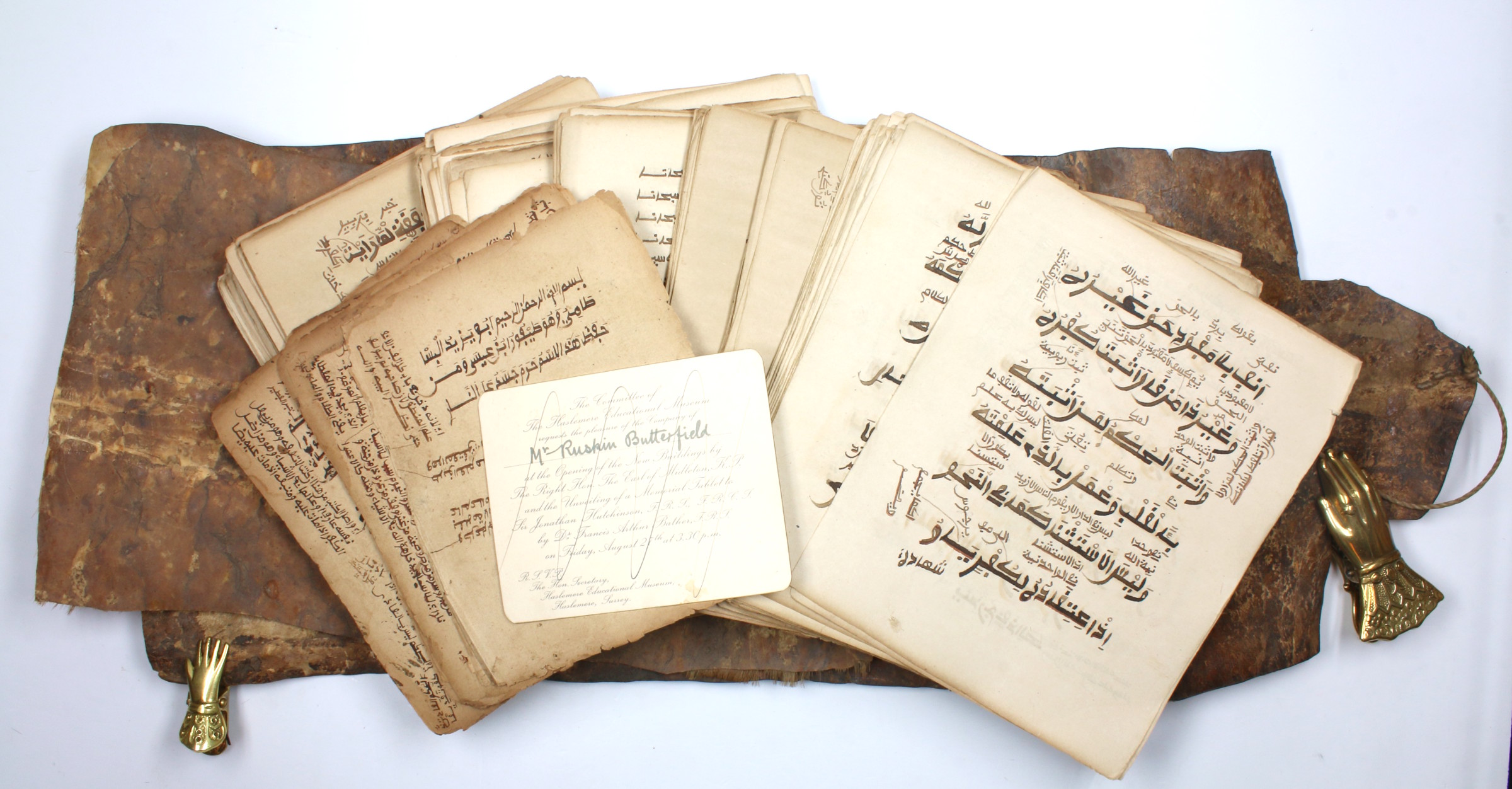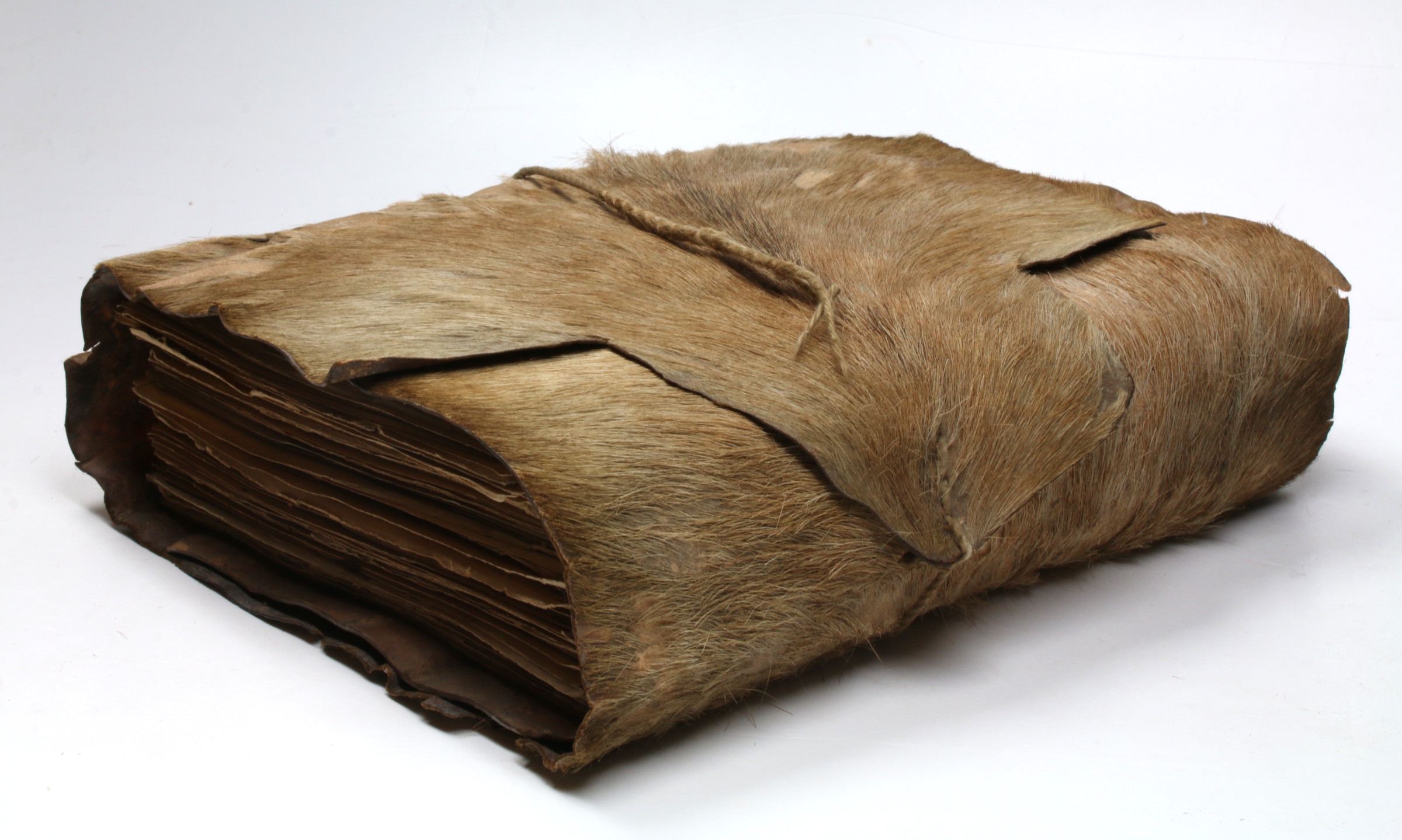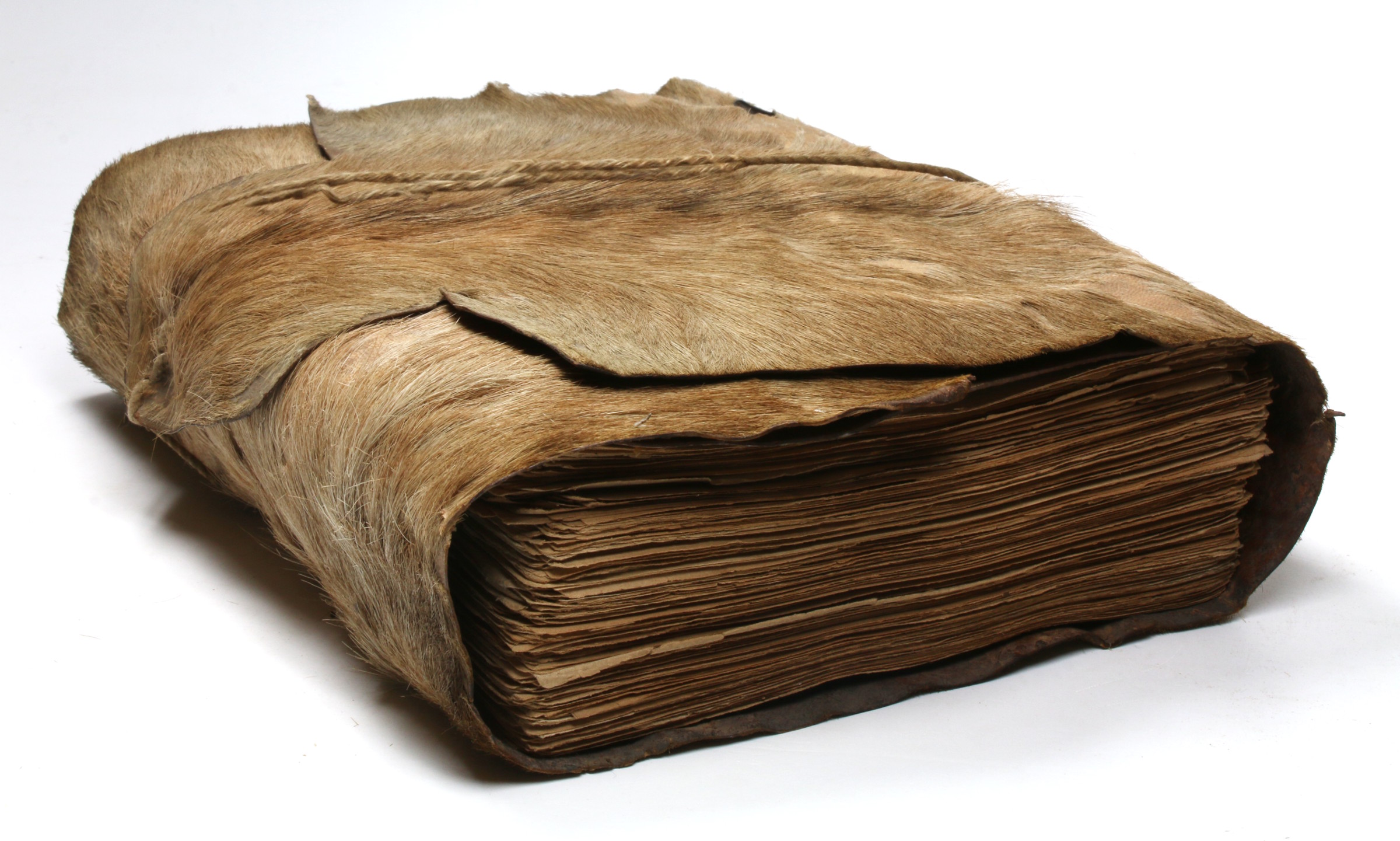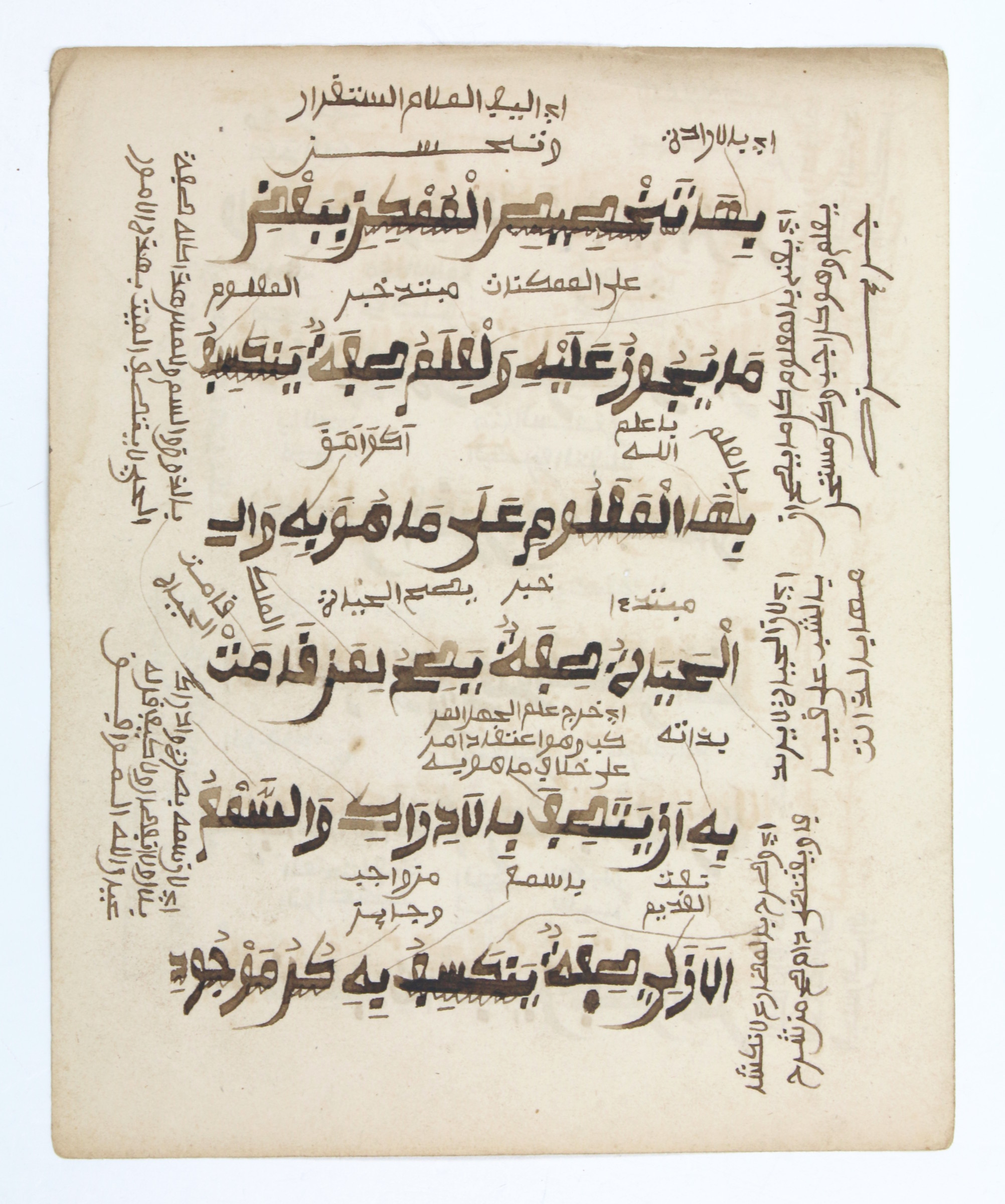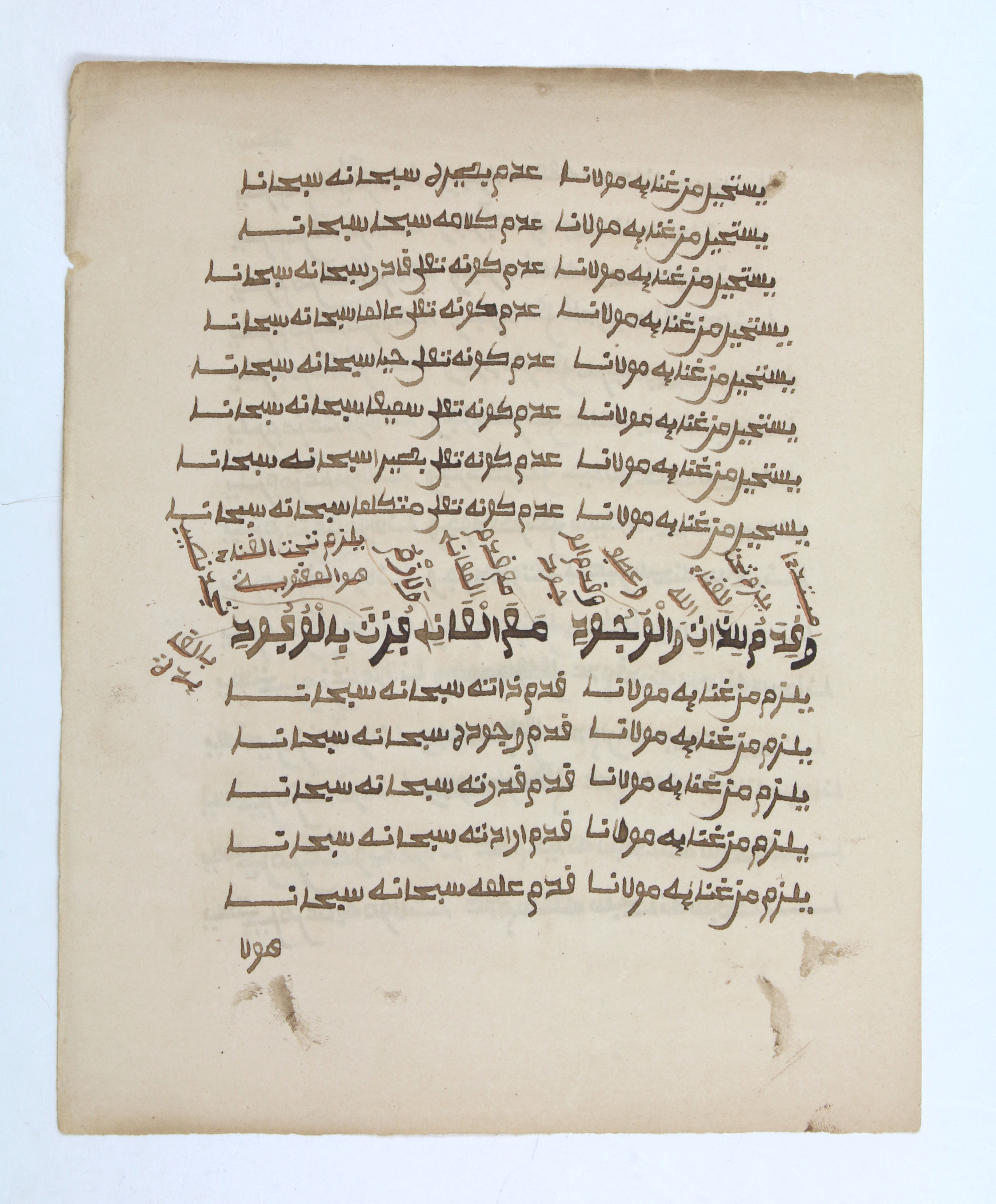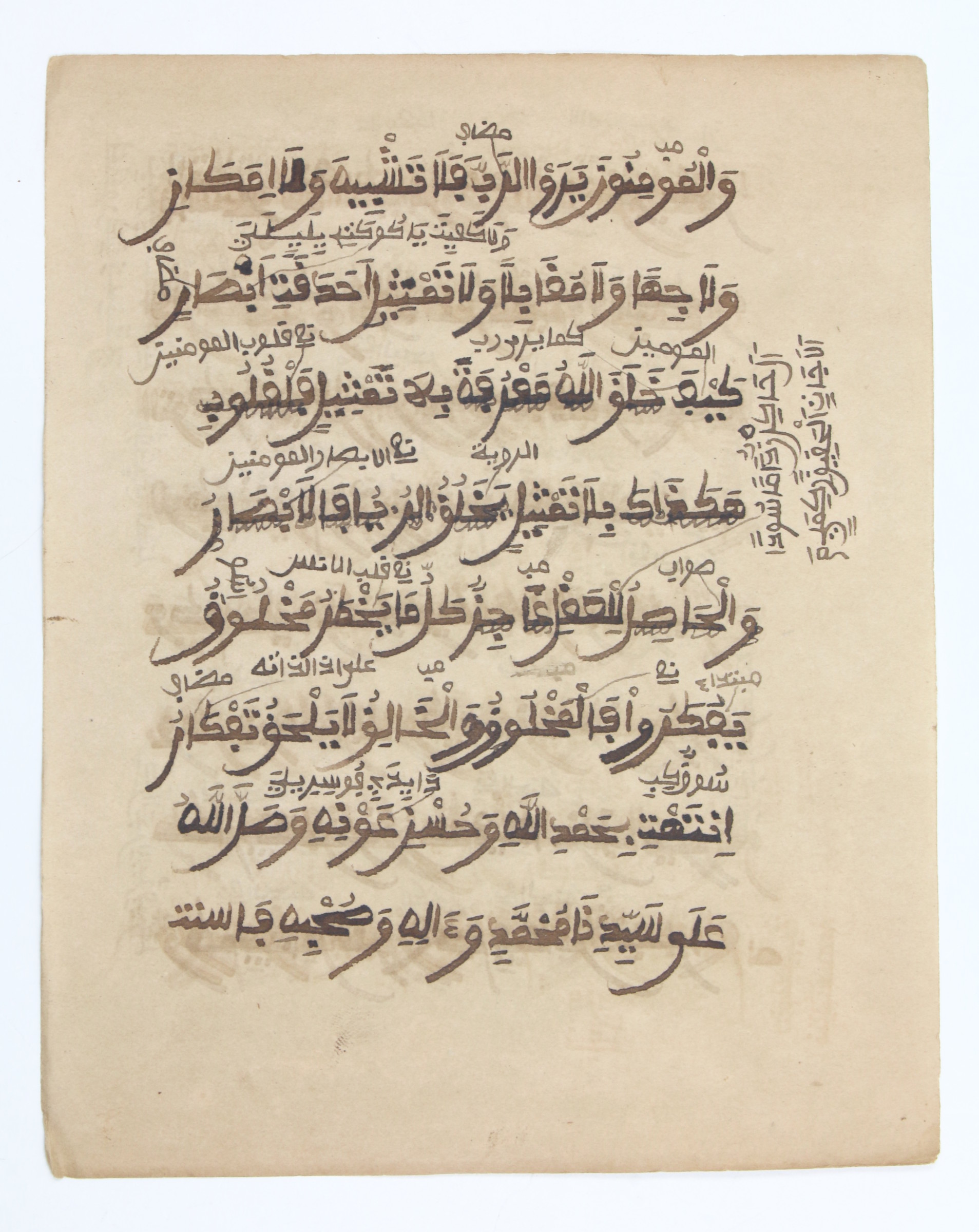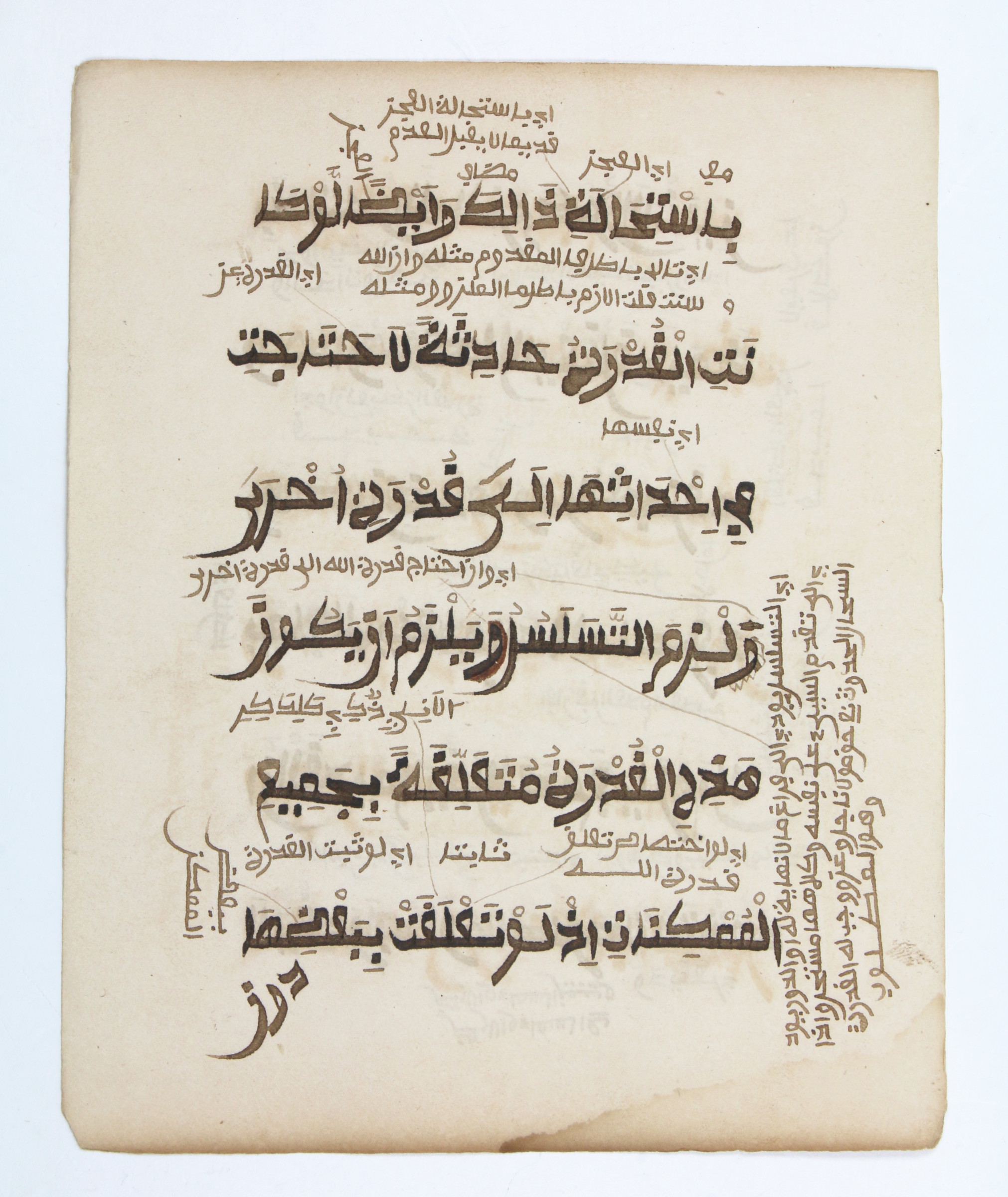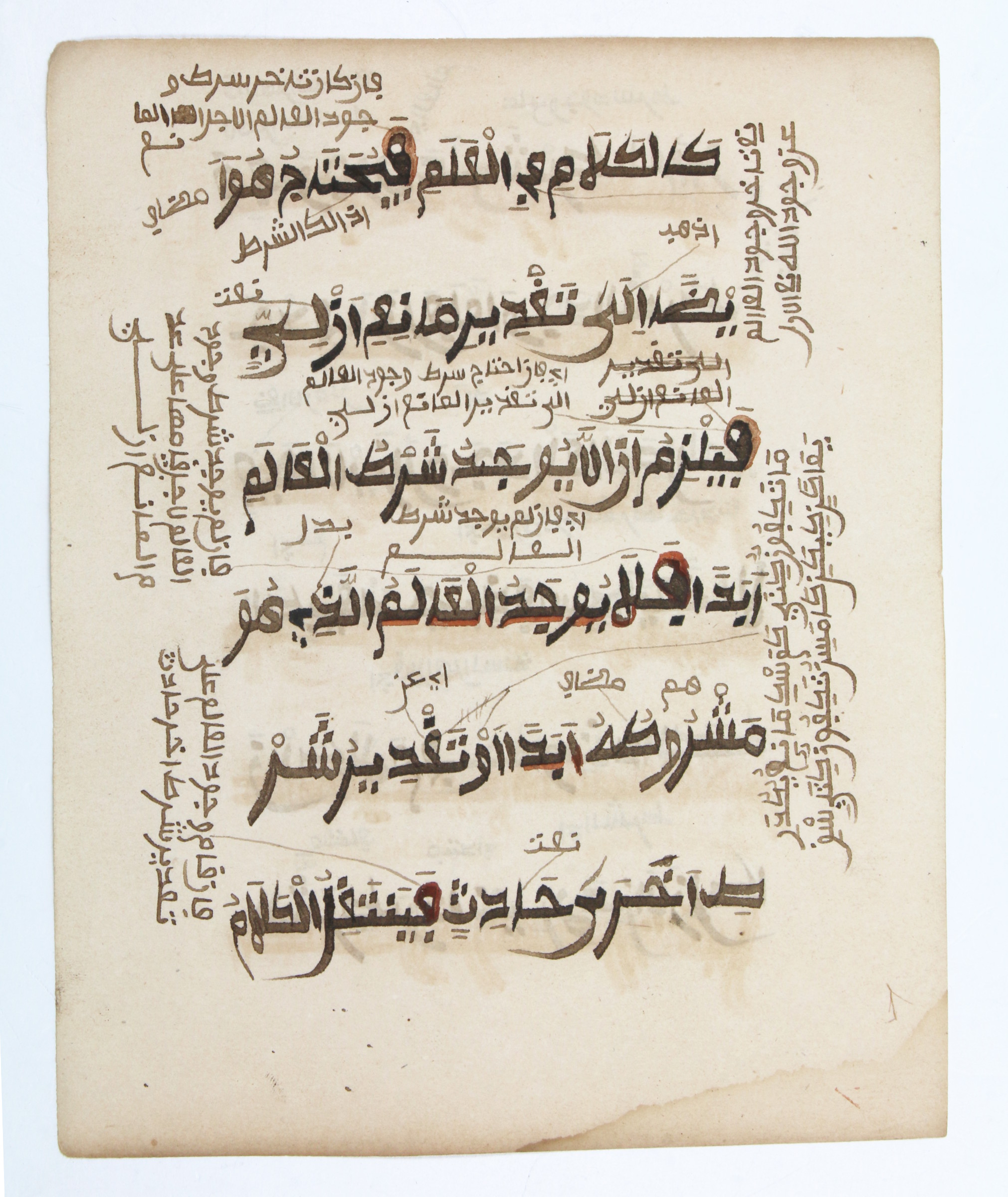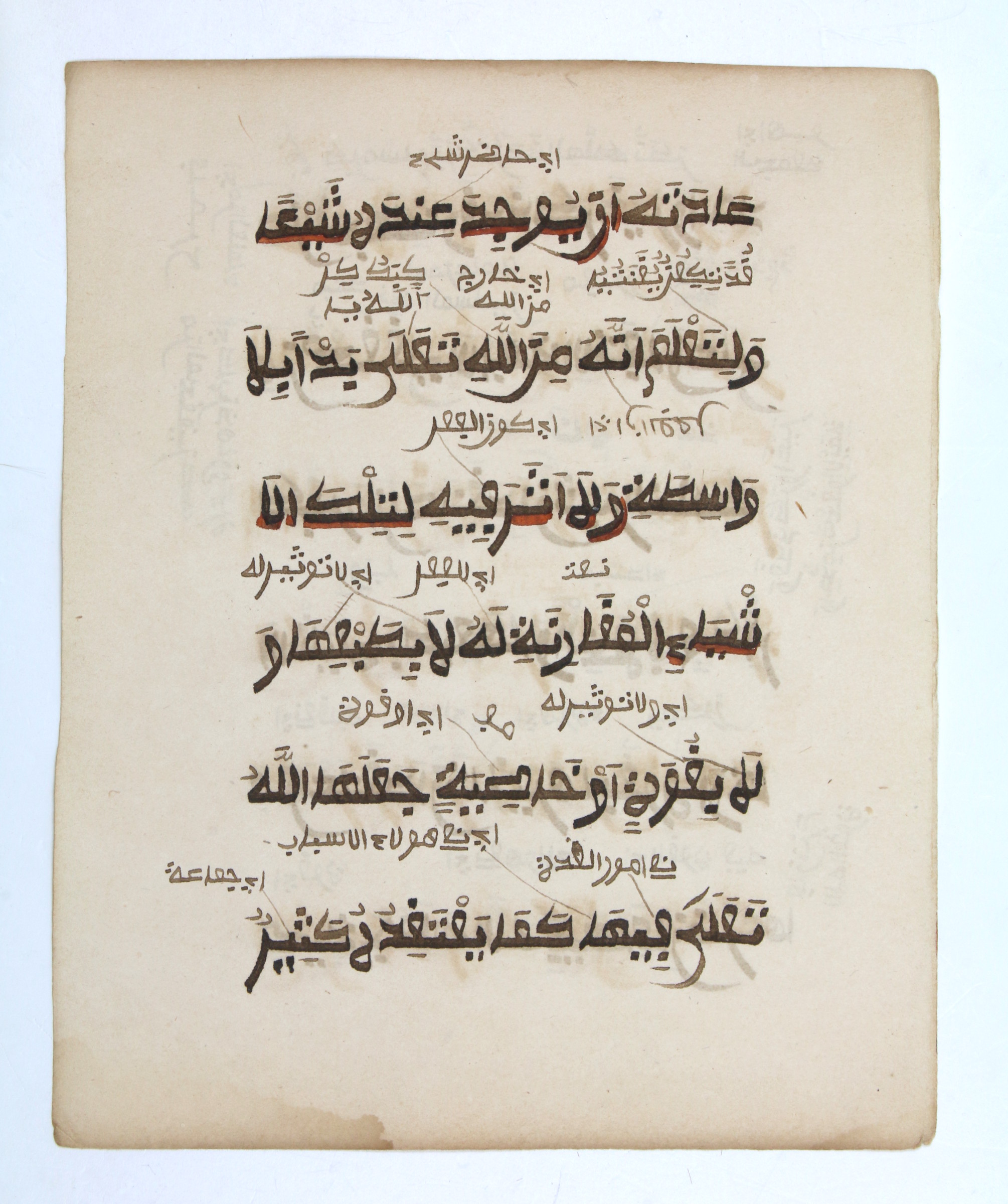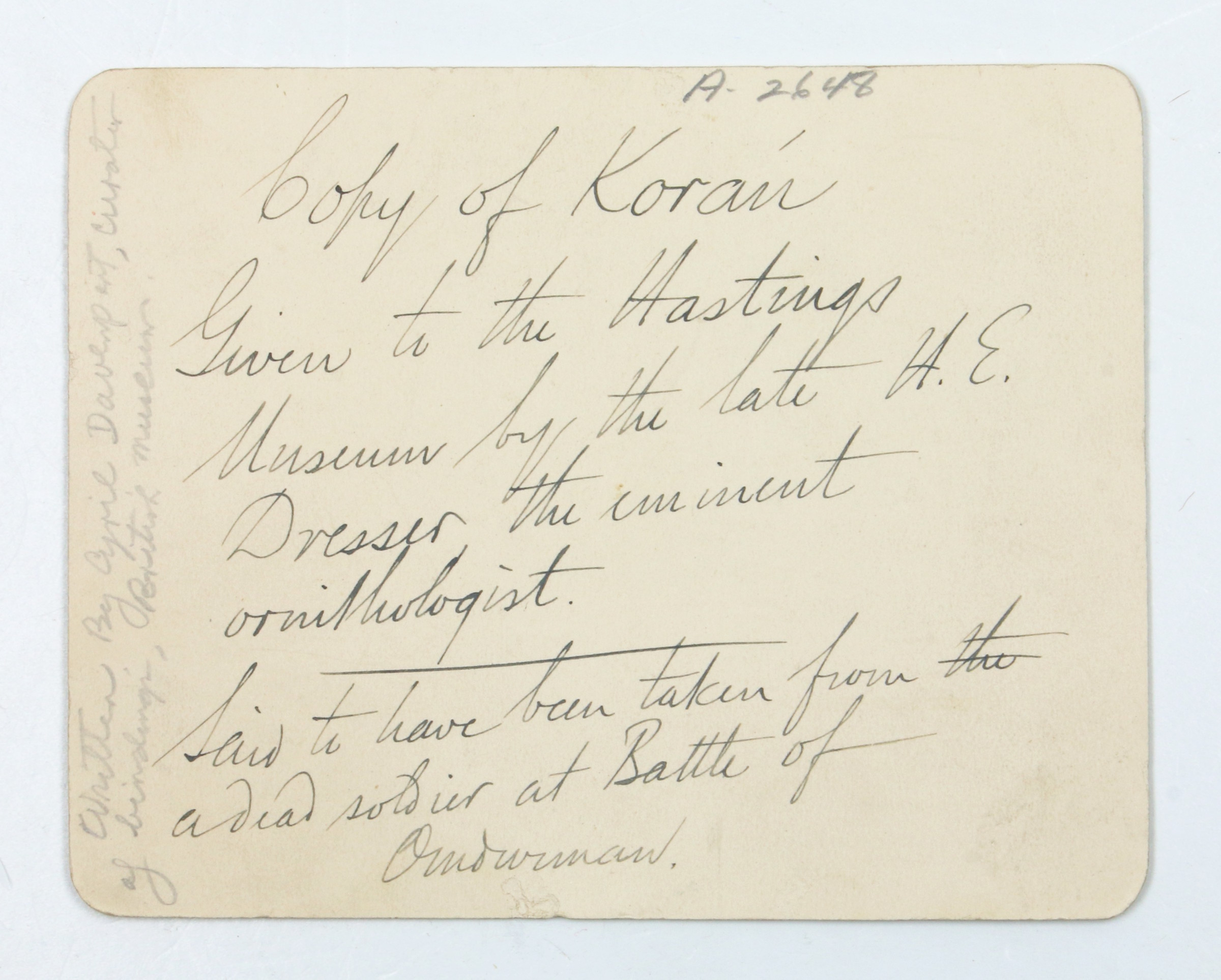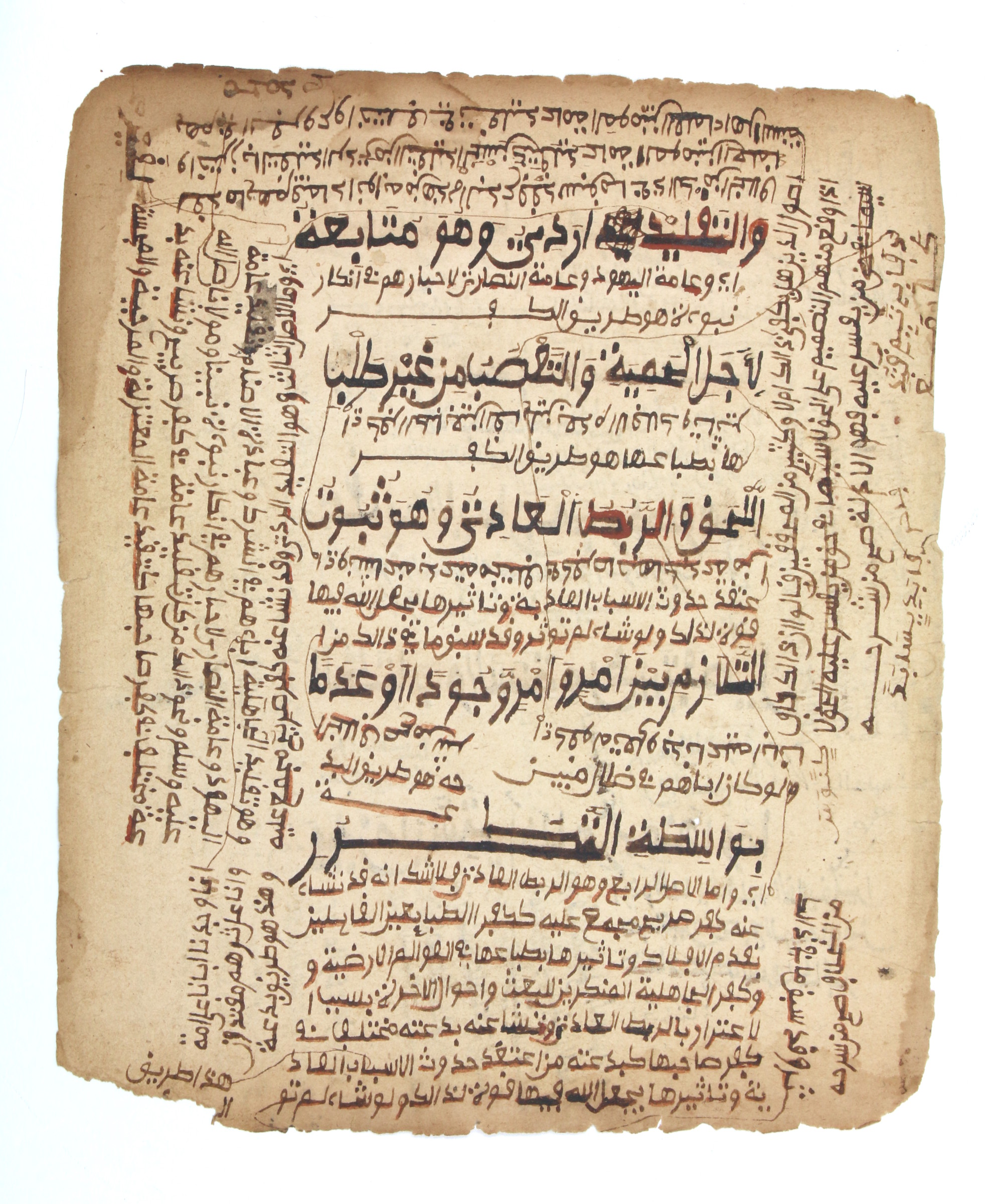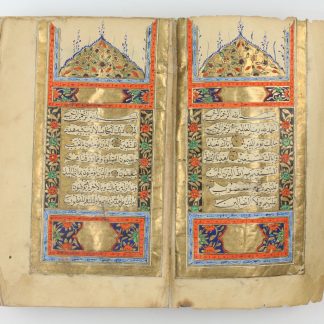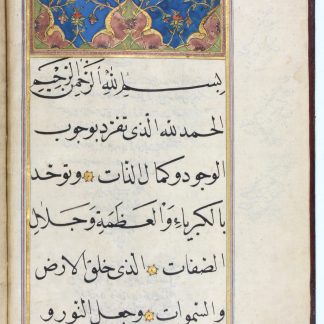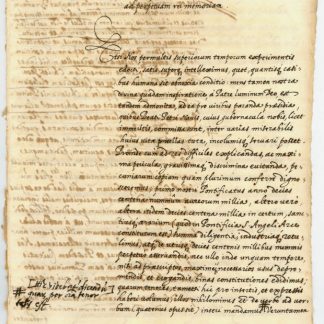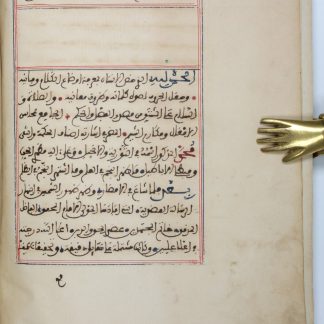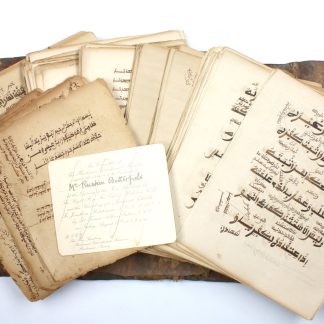An exemplar of Sudanese manuscript tradition
Prayers and excerpts from the Qur’an copied by ‘Omar ibn Hassan.
4to (215 x 260 mm). 371 ff., loose as intended, plus an additional 16 ff. of a smaller (145 x 178 mm) manuscript, also loose. Arabic manuscript on paper. Brown Sudani version of maghribi script with important words and phrases picked out in red. Never bound, comprising loose leaves between two hide covers, wrapped in hide case with twine tie. In protective custom stiff cardstock folding case.
€ 15.000,00
This manuscript, laid loosely in goatskin, comprises a selection of prayers and excerpts of the Qur'an in bold maghribi script, copied by a man named 'Omar ibn Hassan in Sudan. Laid in is a curatorial note written on the reverse of a printed invitation inscribed to Ruskin Butterfield (1872-1935), a curator of the Hastings Museum and allegedly involved in the evaluation of the nearby Piltdown Man Forgery Case, perhaps the most famous paleontological hoax in history. The note on his card reads: "Copy of Koran - Given to the Hastings Museum by the late H. E. Dresser, the eminent ornithologist. Said to have been taken from a dead soldier at the Battle of Omdurman". A later note in pencil adds, "Written by Cyril Davenport, curator of bindings, British Museum".
Assuming veracity, one may trace this manuscript from its scribe 'Omar ibn Hassan to the 1898 battle of Omduram in Sudan, today a district of Khartoum. Fought against the British-Egyptian expeditionary force by Mahdist troops, the battle was catastrophic for the Mahdists and the future of a Sudan independent from British colonial control. Amongst those present on the British side were a young Winston Churchill and Douglas Haig (1861-1928), British commander at the WWI Battle of the Somme and at Ypres.
There is no record, however, of the British businessman and internationally acclaimed ornithologist Henry Eeles Dresser (1838-1915) ever being in Africa, much less present at the British invasion of Sudan, despite his other extensive travels in North America and Europe. Regardless, from his hands it was donated to the Hastings Museum in the quiet Sussex town by the same name, possibly in 1907, a date which appears next to the library stamp which reads "Brassey Institute - Hastings Museum". The Brassey Institute was where the museum resided prior to 1923, and was named for the Brassey family, the most prominent member and collector of which was Lady Annie Brassey (1839-87), who did in fact travel to Egypt and possibly Sudan, but died eleven years before the Battle of Omdurman.
The final name tied to the manuscript, Cyril Davenport (1848-1941), worked as a bookbinding specialist for the British Museum from 1868 to 1913; he may have had some interest in the binding style of the manuscript, which while an established tradition in the Horn of Africa and surrounding areas, is quite distinctive from other Arabic manuscript traditions and beautifully represented here. Another, smaller manuscript is laid in, also loose, with similar style and content.
Provenance: Based on laid-in note, (1) Unnamed Sudanese soldier. (2) Collection of Henry Eeles Dresser (1838-1915). (3) The Brassey Institute and Hastings Museum, Hastings, UK. (4) Bloomsbury Auctions, 2009.
Light edgewear and toning to some leaves, which are not entirely in order. Generally bright and clean.

